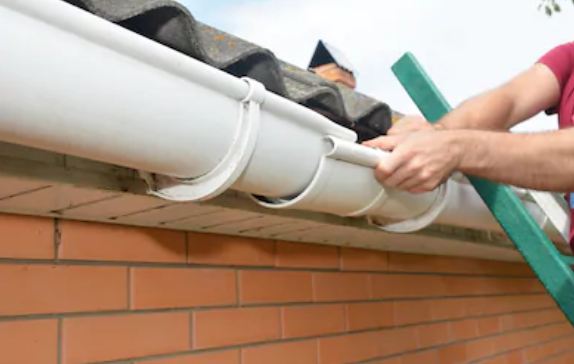Over time, dirt and debris can make it difficult for rainwater to drain away properly. Keeping your gutters and downpipes free from blockage can help them flow more smoothly and also prevent damp and flooding.
Scroll down to know some of the basic tips and tricks that can help you achieve free-flowing gutters:
Invest in the Best Cleaning Tools
You can either get the cleaning job done by yourself or you can seek professional assistance if you don’t have any idea about the process. If you take the DIY route, make sure you use the right set of cleaning tools to get the best results. Some of the things you must arrange beforehand include PPE (eye protection + reusable safety boot covers), waterproof clothing, hard-bristled broom, hand towel, pressure water, waste bags, ladder, and a non-toxic cleaning solution.
Clean the Roof
With the help of a hard-bristled cleaning brush, remove and collect any loose debris on your roof. Also, if there’s any moss buildup, scrape it out too so that it won’t enter your gutters when it rains. Check gutters for any cracks or splits to confirm that it’s in good shape and doesn’t need any repair.
Collect Debris by Hand
Your gutter will most likely be stuffed with moss and leaves. This can increase with time and can look like a dense substance after some time. The best way to get rid of this mess is to collect it by hand as if you apply water pressure it will end up obstructing the downpipes and drains. Take a small hand towel and scrape this bulk away from the guttering. Scoop and collect in the waste bag.
Choose a Good Cleaning Solution
A good-quality cleaning solution will create a lubricating effect and help loosen up the tough deposits. Some solutions also act as a preventive tool that prohibits the buildup of debris on your guttering. For tough debris, you can also use an electric brush that rotates around and flushes away all the dirt when you apply water pressure.
An Angled Spray Lance is a MUST
You need an angled spray lance accompanied with right nozzles to get access to all the unreachable parts of your gutter. Especially, if you’re using a ladder, it wouldn’t be possible to thoroughly clean your gutter without spraying in the right direction. Selecting the right nozzle is extremely important. Some attachments come with amazing spraying power while others may not offer a suitable spray diameter. Ideally, you should look for the nozzles that force water out in full pressure in a fan spray pattern so that all parts of the gutter can be cleaned in a single move.
Specialist Paints Could be a Good Investment
Today, you can find many anti-rust specialist paints that prevent rust from occurring by creating a protective layer on the top. Make sure you thoroughly clean and dry your gutter before you apply paint on the surface. This step is best suited to iron guttering only as if you try to paint a plastic option, the product may not stick to it properly and could contain toxic chemicals that damage the surface over time.
Cleaning the Downpipes
If you see water coming out of your gutter when it rains, blocked downpipe is likely the cause. Luckily, there are many ways you can clean your downpipes to help your gutters work at optimum efficiency. Choose any process that best fits your preferences and needs.
Clean the Drains
Always clean the drains at the same time you’re cleaning up your gutter and downpipes. While it’s easier to notice dirt and debris settled over the surface of your gutters, drains tend to be somewhat challenging. Take all the noticeable stuff (leaves, branches, and plants) by hand and pour in a generous quantity of drain cleaner. Let it rest for a while and blast the blockage away with water pressure.
Routine Maintenance is the KEY
Keep in mind, all of your efforts will go down the drain if you don’t opt for routine maintenance. Bi-annual cleaning will make it easier to keep your gutters, downpipes and drains clean and in good shape. If your home is located in an area where there are many trees, you may need to clean your gutters every 2 or 3 months. In that case, try to invest in gutter guards to avoid trouble.

